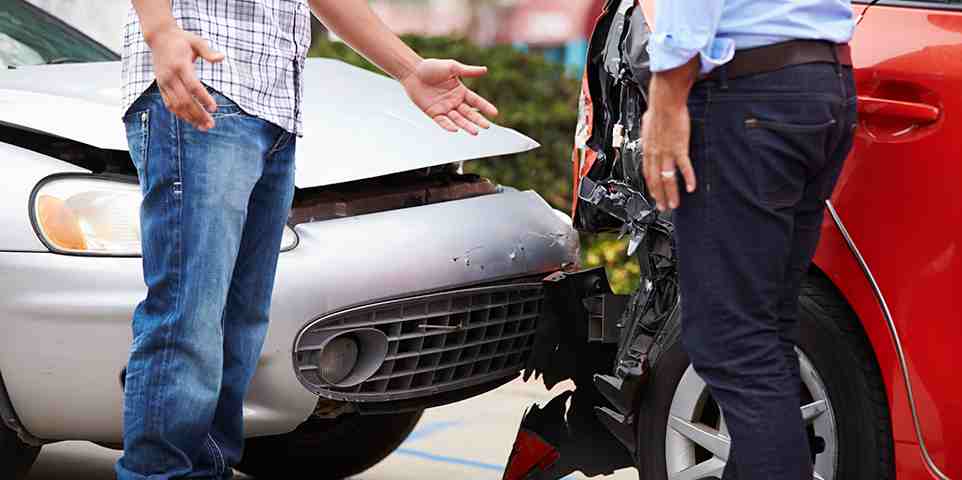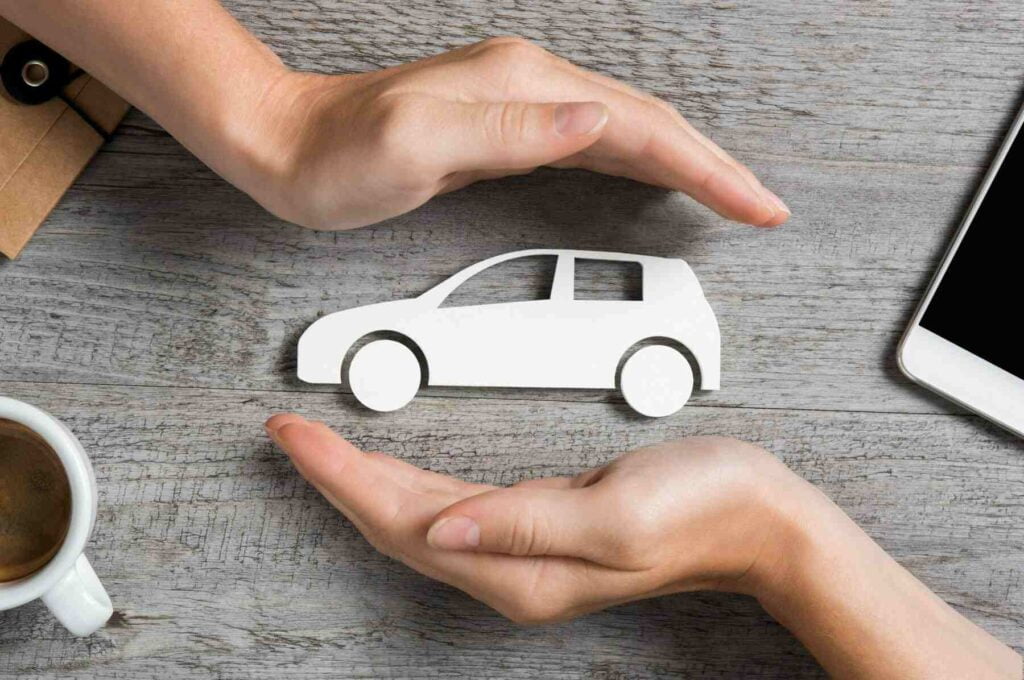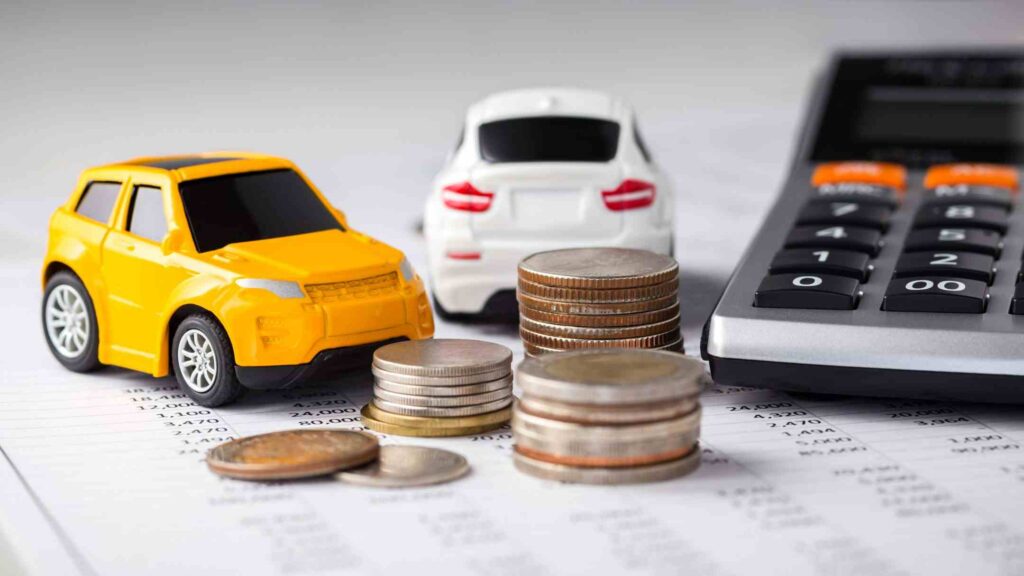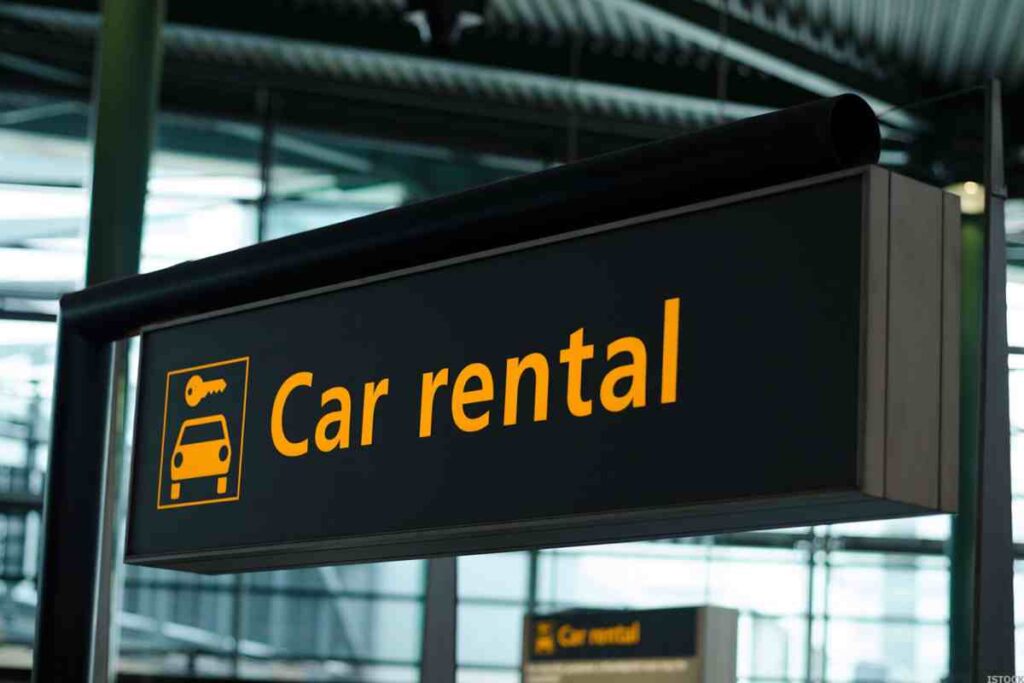Imagine you’re driving home after a long day, and out of nowhere, a car hits you. You’re okay, but your car isn’t. Now, imagine the driver who hit you doesn’t have insurance. What do you do? Who pays for the damages? This is where Uninsured Motorist Coverage comes into play. It’s a safety net for situations just like this. But why is it so expensive? In this article, we’ll dive deep into the world of Uninsured Motorist Coverage, exploring why it can be costly, but also why it might be a worthwhile investment for your peace of mind on the road.
Understanding Uninsured Motorist Coverage

Uninsured Motorist Coverage (UM) is a type of auto insurance designed to protect you if you’re involved in an accident with a driver who doesn’t have insurance. Despite legal requirements in many places, a significant number of drivers remain uninsured, leaving insured drivers at risk. UM coverage steps in to cover costs that the uninsured driver would otherwise be responsible for, such as medical bills and property damage.
Here’s how it works:
- Coverage: Uninsured motorist coverage can pay for medical bills, lost wages if you can’t work because of the car accident, pain and suffering compensation, and even funeral expenses. It does not pay anything to the driver who had no insurance. It pays you.
- Property Damage: In some states, you can also buy uninsured motorist property damage (UMPD). It pays for your car’s damages if an uninsured driver hits you. Note that collision coverage, which is optional and available in every state, can also cover your vehicle damage, whether the person that hit you is insured or not.
- Underinsured Motorist Insurance: Underinsured motorist (UIM) insurance is separate coverage but sometimes is packaged with UM. UIM pays for medical bills and other expenses for you and your passengers if you’re in a car accident caused by a driver who doesn’t have enough liability insurance to cover your medical bills.
- Coverage Limits: The amount of uninsured motorist coverage you need typically matches your liability coverage amounts. For example, if you have liability limits of $100,000 for injury to one person and $300,000 for injuries in one accident (known as 100/300), you would buy 100/300 in UM coverage.
Remember, some states require drivers to carry uninsured motorist coverage, but it can be a savvy addition to your auto insurance no matter where you live.
Types of coverage:
- Uninsured Motorist Bodily Injury (UMBI): This type of coverage helps pay for medical expenses, lost wages, and other related costs if you or your passengers are injured in an accident caused by an uninsured driver. It can also cover pain and suffering in some cases.
- Uninsured Motorist Property Damage (UMPD): UMPD covers the cost of repairs to your vehicle if it’s damaged by an uninsured driver. This type of coverage is particularly useful if you don’t have collision coverage, as it ensures you’re not left paying out of pocket for vehicle repairs.
Having both types of uninsured motorist coverage can provide comprehensive protection, ensuring you’re covered for both bodily injuries and property damage in the event of an accident with an uninsured driver.
Why is Uninsured Motorist Coverage So Expensive?
The cost of Uninsured Motorist (UM) Coverage is influenced by several factors:
- Location: The state where you live can significantly impact the cost of your UM coverage. States with a higher percentage of uninsured drivers typically have higher premiums.
- Coverage Limits: The more coverage you buy, the higher your premiums will generally be. For example, if you have liability limits of $100,000 for injury to one person and $300,000 for injuries in one accident (known as 100/300), you would buy 100/300 in UM coverage.
- Driving Record: A clean record might lead to lower premiums, while past accidents or violations could increase rates.
- Vehicle Type: More valuable or expensive-to-repair vehicles can increase premiums.
- Financial Resources: Your financial situation can also influence the amount of coverage you decide to purchase.
- Daily Commute: The potential risks associated with your daily commute, such as the distance and the areas you drive through, can also affect your coverage decisions.
- Age and Gender: Younger drivers, especially males, often pay more for insurance because they’re statistically more likely to be involved in accidents.
- Marital Status: Married individuals often see lower car insurance rates than their single counterparts.
- Credit Score: In some states, insurers can use your credit score to determine your insurance premiums. A higher credit score might lead to lower premiums.
- Claim History: If you’ve made several claims in the past, insurers might consider you a high-risk driver, leading to higher premiums.
- Policy Deductible: The deductible is the amount you pay out of pocket before your insurance kicks in. A higher deductible usually means lower premiums, but you’ll pay more if you need to file a claim.
Remember, it’s essential to consider these factors and consult with an insurance professional to determine the right amount of coverage for your specific needs.
Prevalence of Uninsured Drivers
The prevalence of uninsured drivers is a significant factor that impacts the cost of uninsured motorist coverage. Here’s how:
- Prevalence of Uninsured Drivers: According to a 2023 study by the Insurance Research Council (IRC), about one in seven drivers, or 14.0 percent of motorists, were uninsured in 2022. This rate varies from state to state. For instance, the District of Columbia had the highest percentage of uninsured motorists at 25.2%, while Wyoming had the lowest at 5.9%.
- Impact on Insurance Cost: The presence of uninsured drivers increases the risk for insurance companies. When an accident occurs involving an uninsured driver, the insurance company of the insured driver often has to cover the costs. This increased risk is reflected in the cost of uninsured motorist coverage. In fact, insured drivers paid, on average, approximately $78 per insured vehicle in 2016 for uninsured motorist coverage.
- State Laws and Online Verification Systems: More than half of the states have passed laws and begun to develop and implement online auto insurance verification systems to identify uninsured motorists. These efforts can help reduce the number of uninsured drivers and potentially lower the cost of uninsured motorist coverage.
- Economic Factors: Economic conditions can also impact the prevalence of uninsured drivers. For example, personal income declines and high inflation, coupled with Americans driving fewer miles, prompted some motorists to suspend the purchase of mandatory auto insurance liability coverage.
In conclusion, the prevalence of uninsured drivers is a significant factor that contributes to the cost of uninsured motorist coverage. Efforts to reduce the number of uninsured drivers, such as enforcing state insurance requirements and implementing online insurance verification systems, can help mitigate these costs.
Benefits of Uninsured Motorist Coverage
Uninsured Motorist Coverage, despite its cost, can provide significant benefits that can protect you financially in the event of an accident with an uninsured driver. Here are some key benefits:
- Medical Bills: UM coverage can pay for medical expenses if you or your passengers are injured in an auto accident caused by an uninsured driver.
- Lost Wages: If you can’t work because of the car accident, UM coverage can compensate for lost wages.
- Pain and Suffering Compensation: UM coverage can provide compensation for pain and suffering caused by the accident.
- Funeral Expenses: In the unfortunate event of a death resulting from the accident, UM coverage can help cover funeral expenses.
- Vehicle Damage: In some states, you can also buy uninsured motorist property damage (UMPD). It pays for your car’s damages if an uninsured driver hits you.
- Protection Against Hit-and-Run Accidents: UM coverage also protects you after hit-and-run accidents.
- Coverage in Case of Insurer Insolvency: UM coverage can protect you if a driver whose insurance company denies coverage or goes out of business hits you.
Remember, while Uninsured Motorist Coverage can be expensive, it provides a safety net that can save you from significant financial hardship in the event of an accident with an uninsured driver.
State Requirements for Uninsured Motorist Coverage in USA
In the United States, the requirements for Uninsured Motorist Coverage vary by state. Here’s a brief overview:
- Mandatory Uninsured Motorist Coverage: In some states, Uninsured Motorist Coverage is mandatory. These states include Connecticut, Illinois, Kansas, Maine, Maryland, Massachusetts, Minnesota, Missouri, Nebraska, New York, North Carolina, North Dakota, Oregon, South Carolina, South Dakota, Vermont, West Virginia, Wisconsin, and the District of Columbia. It’s also required in New Hampshire and Virginia if you purchase car insurance.
- Optional Uninsured Motorist Coverage: In other states, Uninsured Motorist Coverage is optional. This means that while it’s offered to all policyholders, they have the choice to decline it.
- High Rates of Uninsured Drivers: Some states have a high percentage of uninsured drivers, which can influence the cost and necessity of Uninsured Motorist Coverage. For example, Mississippi has the highest percentage of uninsured drivers at 29.4%, followed by Michigan (25.5%), Tennessee (23.7%), New Mexico (21.8%), and Washington (21.7%).
- Low Rates of Uninsured Drivers: Conversely, some states have a low percentage of uninsured drivers. For instance, only 3.1% of New Jersey drivers didn’t have auto insurance, the lowest in the country.
Remember, even if Uninsured Motorist Coverage is not mandatory in your state, it could be worth considering due to the financial protection it provides in the event of an accident with an uninsured driver.
Comparing Uninsured Motorist Coverage with Other Types of Coverage
Uninsured Motorist (UM) Coverage can be compared with other types of auto insurance coverages as follows:
- Liability Coverage: Liability insurance is the part of an auto policy that pays for vehicle repairs and injuries to others after a crash you’re responsible for. If an at-fault driver doesn’t have enough liability coverage, other injured drivers and passengers may end up footing the rest of the bills. UM coverage prevents that by paying the difference between the at-fault driver’s policy limit and the total cost of the damage they caused.
- Collision Coverage: Unlike UM coverage, which you can only use because of another driver’s actions, Collision coverage can cover damage to your car that you or another driver causes.
- Comprehensive Coverage: Comprehensive insurance covers damage to your car from incidents other than collisions, such as vandalism, theft, or natural disasters. UM coverage, on the other hand, specifically covers damages caused by uninsured or underinsured drivers.
- Underinsured Motorist Coverage: Similar to UM, UIM pays if the driver responsible for an accident doesn’t have sufficient insurance to cover your injuries or vehicle damage. It’s often sold along with UM coverage.
- Personal Injury Protection (PIP): PIP covers your own medical expenses and lost wages after an accident, regardless of who is at fault.
Remember, each type of coverage serves a different purpose and offers different protections. It’s important to understand what each one covers so you can choose the right mix of coverages for your needs.
How to Lower the Cost

There are several strategies you can use to lower the cost of your Uninsured Motorist (UM) Coverage:
- Increase Your Deductible: A higher deductible means you’ll pay more out of pocket if you have a claim, but it can also lower your premium.
- Choose a Less Expensive Car: The type of car you drive can affect your insurance rates. Consider a vehicle that won’t be too costly to repair.
- Maintain a Clean Driving Record: Drivers with no accidents or traffic violations often qualify for lower rates.
- Improve Your Credit Score: In some states, a better credit score can lead to lower insurance premiums.
- Shop Around: Insurance rates can vary significantly between companies. It’s a good idea to get quotes from multiple insurers to ensure you’re getting the best deal.
- Bundle Your Insurance Policies: Many insurance companies offer discounts if you buy multiple types of insurance policies from them.
- Take a Defensive Driving Course: Some insurers offer discounts to drivers who complete approved defensive driving courses.
- Opt for Lower Coverage Limits: While this means less protection, it can also result in lower premiums. However, this should be a last resort as it could leave you underinsured.
Does Insurance Cover Scratches On A Rental Car?
Remember, while it’s important to try and keep your insurance costs down, it’s equally important to ensure you have the coverage you need to protect yourself financially.
FAQs
Q 1. What is the difference between Uninsured and Underinsured Motorist Coverage?
Ans. Uninsured Motorist Coverage (UM) is a type of car insurance that covers medical expenses if you or your passengers are injured in an auto accident caused by a driver who doesn’t have any liability car insurance or a hit-and-run driver. On the other hand, Underinsured Motorist Coverage (UIM) kicks in when the at-fault driver has some insurance, but not enough to cover all the damages they caused.
Q 2. What happens if I’m in an accident with an uninsured driver and I don’t have Uninsured Motorist Coverage?
Ans. If you’re in an accident with an uninsured driver and you don’t have Uninsured Motorist Coverage, you may have to pay for the damages yourself. However, if you have collision coverage or personal injury protection, these may help cover some of the costs.
Q 3. Does Uninsured Motorist Coverage cover hit-and-run accidents?
Ans. Yes, Uninsured Motorist Coverage can cover hit-and-run accidents.
Q 4. Can I use Uninsured Motorist Coverage if the other driver’s insurance company denies their claim?
Ans. Yes, you can use Uninsured Motorist Coverage if the other driver’s insurance company denies their claim.
Q 5. How does Uninsured Motorist Coverage interact with my health insurance?
Ans. The primary function of Uninsured Motorist Coverage is to pay medical bills after a car accident with an uninsured driver. If you have good health insurance, you may not feel you need UM coverage. But UM protection might be attractive if you have a high deductible health insurance plan and would pay a large amount of money for a hospitalization.
Q 6. What should I do if I’m in an accident with an uninsured driver?
Ans. If you’re in an accident with an uninsured driver, you should call the police, exchange contact information, seek medical treatment, take photographs, gather witness statements, request the police report, and notify your insurance company.
Q 7. How do I file a claim under my Uninsured Motorist Coverage?
Ans. To file a claim under your Uninsured Motorist Coverage, you should report the incident to your insurance company with as much detail as possible, file a police report, follow up with the insurance adjuster assigned to your claim and provide any additional information or photos to them, and wait for the adjuster to finish investigating the incident.
Q 8. How can I find out the percentage of uninsured drivers in my state?
Ans. You can find out the percentage of uninsured drivers in your state by referring to studies and statistics published by insurance research councils or financial advisory websites.
Conclusion
In conclusion, Uninsured Motorist Coverage is an essential part of your auto insurance policy that protects you from the financial implications of an accident with an uninsured driver. While it can be expensive due to factors such as the prevalence of uninsured drivers, coverage limits, and location-based factors, it provides significant benefits that can outweigh its cost.
Despite the expense, there are ways to lower the cost of your Uninsured Motorist Coverage, such as increasing your deductible, maintaining a clean driving record, and shopping around for the best rates. Remember, while it’s important to save money where you can, having the right coverage to protect you and your family is priceless.

Join Shubham, a finance enthusiast with a mission to empower readers with the knowledge and tools to achieve financial freedom. Discover smart financial advice and unlock your financial potential.


